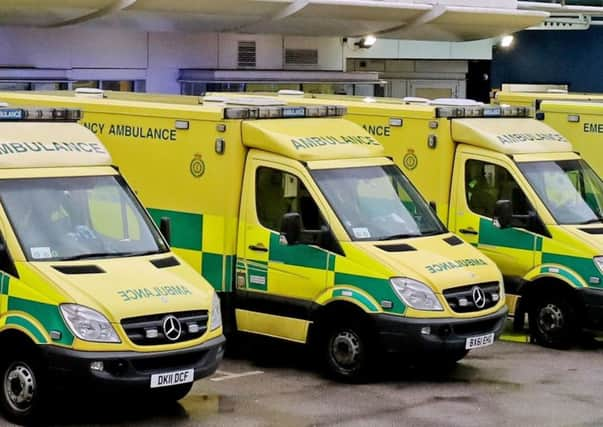Thirty North Tees and Hartlepool NHS Foundation Trust patients left waiting more than half an hour in ambulances


Unison said delays risk the safety of patients and are “a terrible waste” of ambulance crews’ skills.
Ambulances took 3,862 patients to emergency departments at the North Tees and Hartlepool NHS Trust between December 3 and February 3, according to NHS Digital data.
Advertisement
Hide AdAdvertisement
Hide AdOf those, 30 waited between 30 and 60 minutes before A&E staff were able to take over from paramedics, and two arrivals waited for more than an hour.
Despite the NHS saying a delay of just 15 minutes is a potential threat to life, six patients waited up to an hour on the day when the problem was at its most severe.
The overall number of delays at the North Tees and Hartlepool Trust has dropped considerably since 2017-18.
Over the same period in the previous winter, 109 patients waited in ambulances for 30 minutes or more, 71% more than this year.
Advertisement
Hide AdAdvertisement
Hide AdColm Porter, Unison’s national ambulance officer, said: “Handover delays are a stark illustration of the extreme pressure on the NHS caused by years of chronic underfunding.
“Not only are patients put at risk with lengthy waits to get into A&E, but there are also fewer ambulances available to respond to emergencies.
“Ambulance staff are stuck in hospitals when they should be out responding to life-or-death 999 calls. This is a terrible waste of their skills and the stress it causes can soon takes its toll on their health.”
Medical director at North Tees and Hartlepool NHS Foundation Trust Deepak Dwarakanath said: “Thanks to the hard work of staff in our urgent and emergency care department, the trust has significantly reduced the number of ambulance handover delays.
Advertisement
Hide AdAdvertisement
Hide Ad“We are absolutely committed to continuing to drive this down further, and we are working together with colleagues in the ambulance service to put measures in place that will support this.”
Douglas McDougall, strategic head of operations at the North East Ambulance Service, said: “Ambulance handover delays are a reflection of the pressure felt across the whole NHS system, especially during times of peak demand and surges in activity.
“We operate a system on behalf of the region, which monitors hospital capacity and demand in real-time, to manage pressures in the system and divert patients to alternative care when necessary.
“This means we’re able to support our hospital colleagues when we can see an issue in any particular hospital.
Advertisement
Hide AdAdvertisement
Hide Ad“A delayed handover can mean that our crews end up queuing at hospital with their patients and tie up ambulance crews who are needed on the road to respond to other emergencies.
“During increased busy times, our staff can experience late meal breaks and late finishes, something that makes a real difference to our employee wellbeing.
“We continue to work with the acute trusts and our commissioners to minimise delays experienced by our patients and staff when handing over at North East hospitals.”
Across England, nearly 100,000 people waited for 30 minutes or more between December and February – one in 10 arrivals.
Advertisement
Hide AdAdvertisement
Hide AdNHS bosses have stressed that A&Es should always accept handover of patients within 15 minutes of arrival by ambulance.
An NHS spokesperson said: “Thanks to the hard work of ambulance and hospitals more people have benefited from a timely handover this year, despite a significant increase in people requiring care.
“We remain committed to further reducing delayed handovers, so that ambulance crews are able to get back out on the road and providing care to patients sooner.”